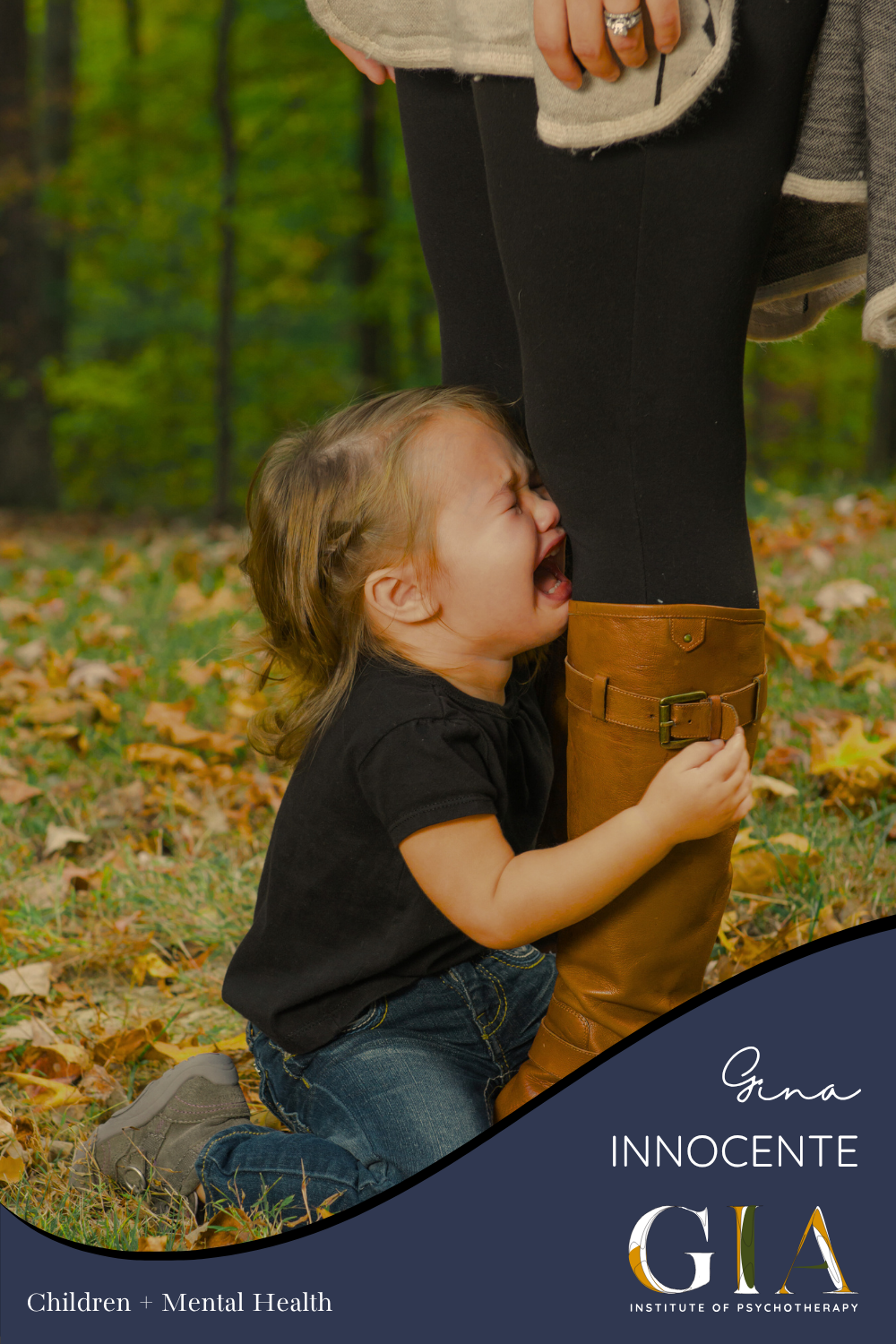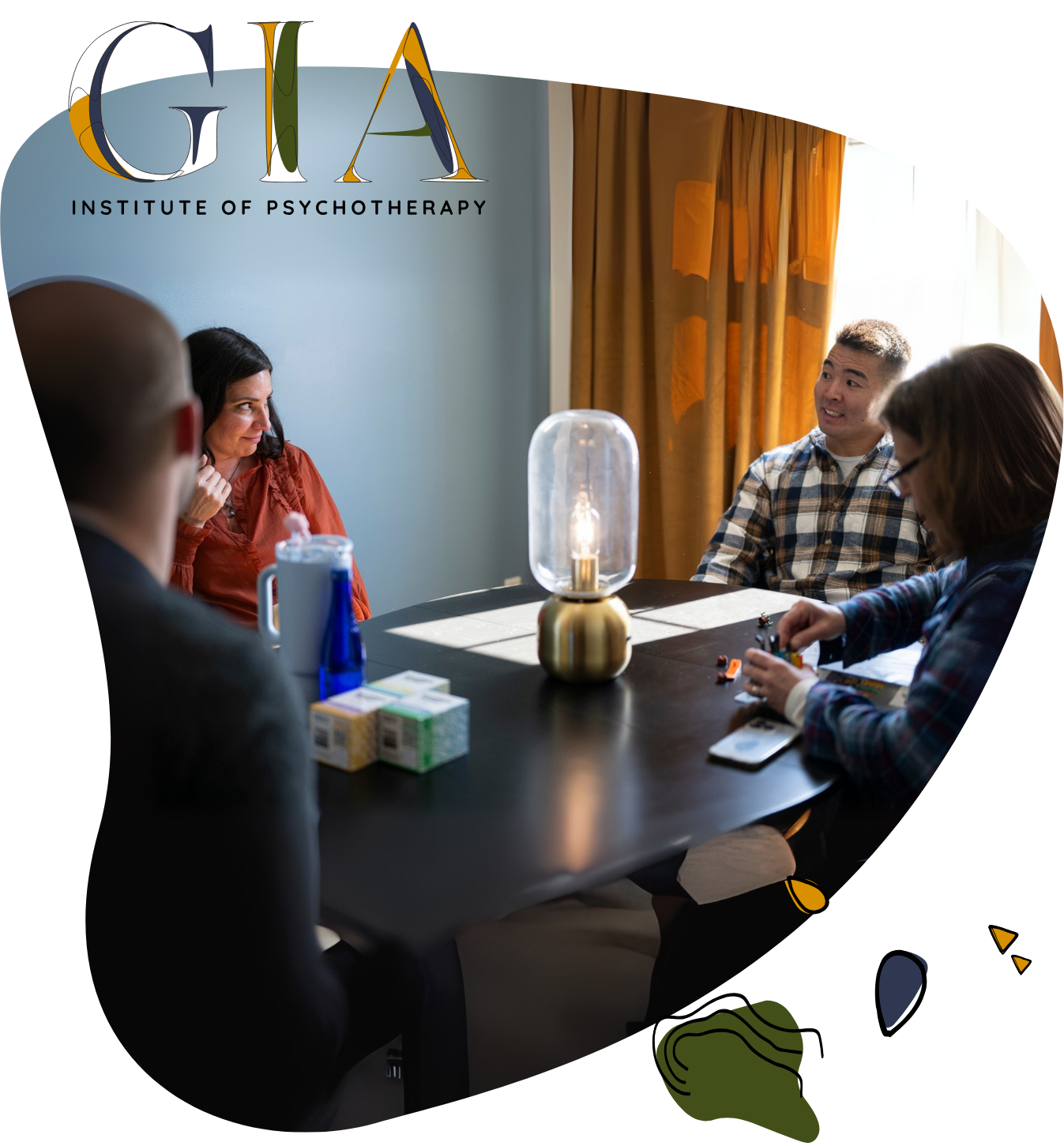Social Anxiety: When “Just Shy” Isn’t the Whole Story
It’s completely normal for kids (and grown-ups, too) to feel nervous in new situations—meeting new people, starting school, or speaking up in class. But when those nerves turn into deep fear or lead to avoiding everyday activities, it might be more than just shyness. Your child could be struggling with social anxiety.
Understanding what social anxiety looks like - and how to support your child through it - can make all the difference.
What Social Anxiety Can Look Like in Kids
Kids rarely say, “I’m anxious.” Instead, you might see it in their behavior. Maybe your child freezes when asked to speak in class, refuses to join group activities they used to love, or complains of stomachaches before school. Some visit the nurse often, avoid parties, or become frequently tearful and irritable. Other signs can be subtle —avoiding eye contact, speaking softly, becoming overly self-conscious, apologetic, or agreeable - , or freezing when attention is on them.
These reactions can feel confusing or frustrating, especially when they show up in everyday moments. But often, your child’s behavior isn’t saying, “I want to be difficult.” They might be saying, “This feels like way too much for me right now.”
Shy or Socially Anxious - What’s the Difference?
It’s normal for kids to be shy, especially around new people. Shyness usually fades as they warm up.
Social anxiety is different—it doesn’t just go away. It’s an intense, ongoing fear of being judged, rejected, or embarrassed in social situations. It can interfere with school, friendships, self-esteem, and everyday life.
A child with social anxiety usually wants to participate but feels paralyzed by fear. While a shy child may need a little encouragement, a socially anxious child may experience genuine distress or even panic about joining in.
If you’re unsure where your child falls, a therapist who works with kids and teens can help clarify what’s going on—and what kind of support will be most helpful.
Common Signs of Social Anxiety in Kids
Social anxiety can begin as early as age 8, but more typically, symptoms emerge during the early to mid-teen years. Because many symptoms are internal, it can be hard to spot. Here’s what you might notice:
Avoidance: A hallmark sign is actively refusing to participate in school, parties, clubs or even simply eating in the cafeteria or using a public restroom,
Social Withdrawal/Isolation: Sitting apart, staying quiet and withdrawn, even when they want to be a part of.
Clinging: Younger children may cry or cling to their parents in new or anxiety-provoking social settings like playdates, school drop-offs, or family gatherings with extended relatives.
Freezing: Going blank, struggling to speak or think clearly, or feeling physically paralyzed — like their words and body just won’t cooperate
Selective Mutism: Talking freely at home with family but refusing to speak to teachers, peers, or strangers in other social settings
Excessive Worry: Stressing for days (or weeks) before social events and replaying past interactions for perceived mistakes.
Social Discomfort: May show subtle signs like avoiding eye contact, speaking in a very soft or low tone, or holding a tense body posture.
Excessive Worry: Stressing for days (or weeks) before an upcoming social event. And replaying past interactions over and over, feeling shame over perceived mistakes.
At-Home Coping Strategies That Can Help
You don’t need a degree or license to help your child manage their social anxiety. Simple tools, understanding, and consistent support are the most powerful things you can do. Here are a few hacks you can try together:
The 3-3-3 Rule
This grounding technique helps kids shift out of anxious thoughts and into the present moment.
Name 3 things they can see
Name 3 things they can hear
Move 3 parts of their body
This can be a lifesaver during tough moments—before school, at birthday parties, or any time anxiety kicks in. Practice it together so it becomes familiar and comforting.
The 3 C’s: Catch It, Check It, Change It
Borrowed from cognitive behavioral therapy (CBT), this tool helps kids notice and reframe anxious thinking.
Catch it: “I’m thinking everyone will laugh at me.”
Check it: “Has that actually happened before? Could there be another way to see it?”
Change it: “Even if someone notices me, I’ll be okay. I can handle it.”
Over time, these small thought shifts can lead to big changes in how kids feel—and how they show up in the world.
Relaxation and Grounding Tools
Make these part of your child’s routine—not just a last-minute fix when anxiety spikes. Try to make calmness and mindfulness a baseline.
Deep breathing: In through the nose, out through the mouth. Count to four each time.
Visualization: Imagine a safe, happy place—like a beach, a treehouse, or even grandma’s kitchen.
Progressive muscle relaxation: Tense and release muscles from head to toe to let go of physical stress.
Think of these as your child’s emotional toolbox. The more they practice, the more confident they’ll feel using them.
When Therapy Might Be the Right Next Step
If anxiety starts interfering with your child’s friendships, school life, or happiness, it might be time to bring in a therapist. A therapist can help you and your child understand what’s happening and offer tools tailored to your family’s needs. Therapy is not just about talking—it can be playful, expressive, and even fun. Therapy approaches we use at GIA include:
Acceptance and Commitment Therapy ACT
Teaches kids to notice anxious thoughts without letting those thoughts be the boss (I can feel scared and still speak up”). Helps them act in line with values — like friendship or curiosity — rather than fear and is especially helpful for teens.
Art Therapy
For kids who struggle to put feelings into words, art gives them another language. Through drawing, painting, or sculpting, kids can express emotions and build confidence without pressure.
Cognitive Behavioral Therapy
The gold standard for social anxiety. Helps kids identify and challenge anxious thoughts and includes Exposure-Based Therapy, where they practice facing fears step-by-step in a supportive way.
DBT for Kids
Dialectical behavior therapy (DBT) helps children manage big emotions, practice mindfulness, and build real-world coping skills for social and emotional challenges.
Family Therapy/Parent Coaching
Anxiety doesn’t happen in isolation—when one family member is hurting, it affects the whole family. We help parents avoid the pitfall of unintentionally supporting avoidant behaviors (e.g., speaking for your child), and instead, get everyone working together to reinforce brave behaviors.
Play Therapy
For younger kids, play is how kids work things out. Through imagination and games, kids practice bravery and connection in a way that feels safe and natural.
Social Skills Training
Structured social skills practice can help. Kids can learn and practice conversation, read body language and other nonverbal cues, and handle social stress. This works best when paired with CBT.
Next Step, Together
At GIA Institute of Psychotherapy in Somers Point, NJ, we specialize in counseling for kids and teens, and help them navigate anxiety, build emotional resilience, and feel more confident in themselves. We offer therapy that’s playful, expressive, and grounded in trust.
If your child is struggling socially, we’re here to help you both find your way forward.
Reach out today to schedule a free consultation—we’ll figure out what works for your child, your family, and your goals.
As relational therapists, we believe that working with a therapist who “gets” you - one who you trust can help you - is the foundation for successful therapy. To ensure the best possible match, we'll schedule a consultation to discuss your specific needs and preferences. We'll consider your cultural background and identity, your goals, and your financial situation to help connect you with a therapist who is right for you.
For in-person sessions in South Jersey, our office is located in downtown Somers Point, NJ. For your convenience, we also offer online sessions for anyone in New Jersey.






